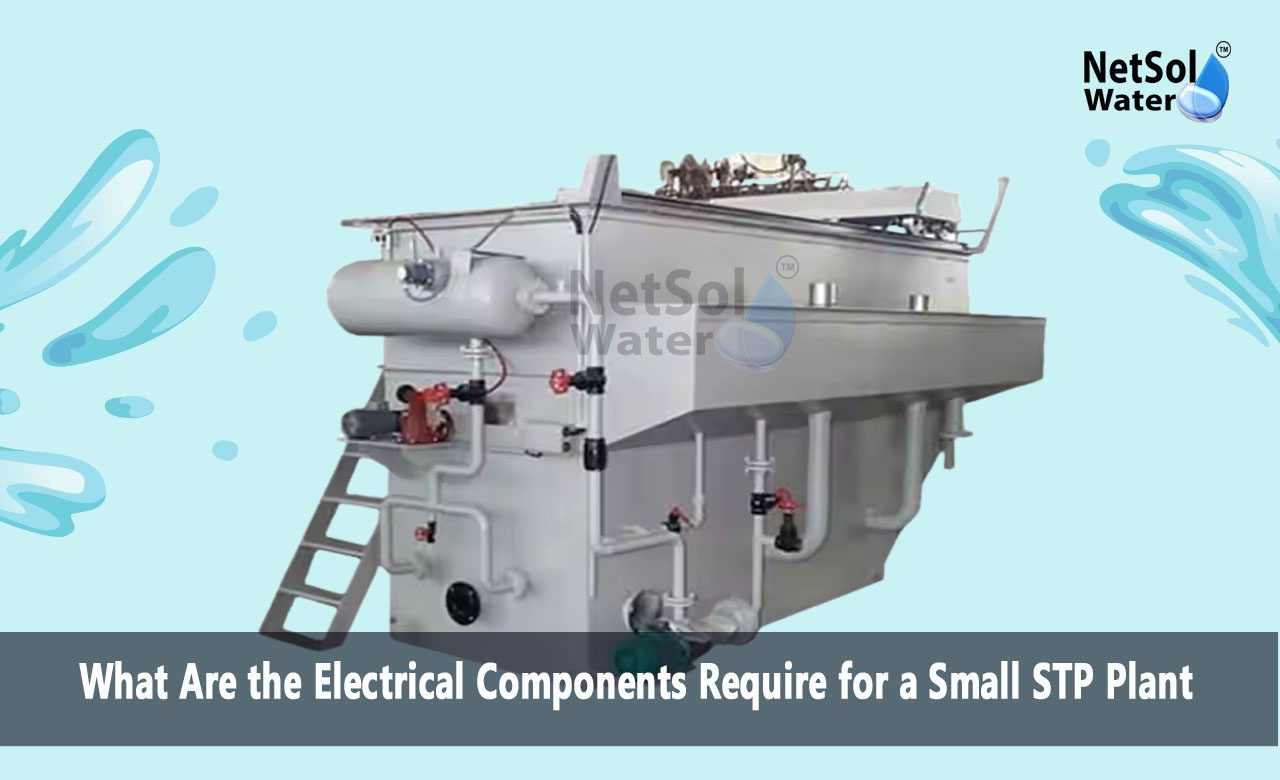What Are the Electrical Components Require for a Small STP Plant?
Sewage Treatment Plants are employed to treat domestic wastewater, office wastewater, and small-scale commercial wastewater. Although their main process is mechanical and biological treatment, electricity also finds a significant role in the operation of different parts properly.
We will pen down the electrical requirements for a small STP, explaining what kind of power supply, safety measures, and backup facilities are needed to ensure continuous and smooth operation.
Electrical Requirements for a Small STP
The electrical requirements for a small STP vary with the plant design, capacity, and technology used. However, all STPs rely on electricity to operate pumps, blowers, control panels, sensors, and even chemical dosing systems in some plants.
The correct electrical layout is essential to the stability of the plant's operation and long life.
Key Electrical Components in a Small STP
Pumps
Pumps convey sewage from collection points to the treatment units and pump water through several stages. Pumps require a continuous power supply, normally three-phase power, but tiny STPs can run on single-phase power depending on capacity.
Blowers and Aerators
Aerators or blowers supply oxygen to aerobic treatment processes. They are high-power-consuming electric devices and must be sized to the STP volume properly.
Control Panels and Automation Systems
Automated control systems are utilized in advanced small STPs to control flow, monitor water quality, and utilize equipment in an efficient manner. Such systems operate on a continuous supply of electrical power and may consist of programmable logic controllers (PLCs).
Lighting and Auxiliary Equipment
Lighting within the plant area and power supply for small pieces of equipment like alarms or communications equipment are also a part of the electrical requirements for a small STP.
Power Supply Specifications
Voltage and Frequency: Most of the small STPs run with conventional industrial power supplies, usually at 230V or 415V having a frequency of 50 or 60 Hz according to the geographical location.
Single-Phase vs. Three-Phase: Small plants (up to a specific capacity) prefer single-phase supply, while large plants operate on three-phase supply in order to ensure proper functioning of pumps and blowers.
Power Rating: The overall power requirement is found by summing up all the power consumed by electrical appliances. Sizing avoids overload and electrical failure.
Electrical Safeguards within the STP installation
Since the wastewater and the water that comes with it provide it with a wet condition, electrical safety is highly essential:
Waterproof and corrosion-proof wiring: All the electric wiring and panels must be corrosion-proof and waterproof to prevent short circuits and damage.
Earthing and Grounding: Equipment and individuals are protected against electrical shock by correct earthing.
Circuit Breakers and Fuses: The system is protected from overloading or faults by the use of these devices.
Explosion-Proof Equipment: In some cases, when the involvement of gases like methane is a consideration, certain explosion-proof electrical components must be used.
Backup Power and Reliability
Round-the-clock power supply is a prime consideration as any deficiency in it will affect the treatment process and create environmental risks.
Backup Generators: Numerous small STPs are furnished with diesel or gas generators to operate during power failures.
Uninterruptible Power Supplies (UPS): UPS systems supply short-duration power to automation systems and control panels to avoid sudden shutdowns.
Solar Power Integration: More and more small STPs have solar panels built into them in order to minimize the cost of electricity as well as enhance sustainability.
Energy Efficiency Considerations
Use of energy is one of the largest operating expenses of the STPs. Designing the electrical requirement of any small STP with energy conservation in mind is one means of conserving expenses as well as environmental footprint, too.
· Use energy-efficient motors as well as pumps.
· Optimize the blowers to run according to real-time oxygen demand.
· Fit variable frequency drives, such that pumps can be controlled on the fly.
· Fit LED lighting to all plant areas.
Installation and Maintenance Recommendations
· Employ qualified electricians who work with STP electrical systems.
· Periodic checking on wiring, panels, and equipment.
· Ensure electrical areas remain clean and free of water exposure.
· Test backup power systems regularly for reliability.
Conclusion
Knowledge of the electrical requirements for a small STP is important to enable it to be run efficiently and safely. An efficient electrical system accommodates all the major pieces of equipment, maintains constant treatment, and safeguards both staff and equipment.
From power supply and safety needs to backup and energy efficiency, all of these need to be planned and maintained with utmost attention. By taking care of these electrical needs, you can improve the functioning and lifespan of your small sewage treatment plant.
Do you need an advice or assistance on selecting the best water and waste water treatment unit? We have solutions for all your problems!
Let us know your problem, our experts will make sure that it goes away.
For an assistance or related query,
Call on +91-9650608473 Or write us at enquiry@netsolwater.com



